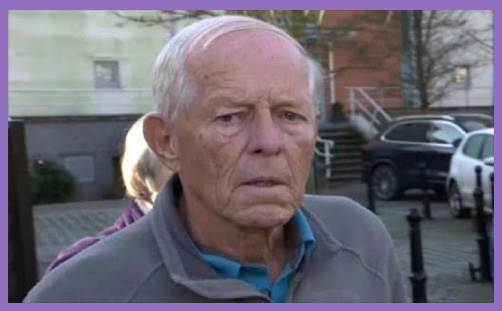

My own personal knowledge of the Winchester Diocese is slight. Apart from once leading a two day residential workshop for the Continuing Ministerial Programme some twenty-five years ago, I have had no other dealings with the Diocese. Nevertheless, I find myself wanting to understand more fully what is behind the announcement several days ago that the Bishop of Winchester is ‘stepping back for six weeks from his duties’.
What can any outsider, like me, hope to uncover about this situation beyond the terse announcement from the Bishop of Southampton? Thanks to the internet, the answer is quite a lot. Two major sources of information are available to us. One is the free and frank discussion by insiders on the website Thinking Anglicans. Supplementing that, there are a variety of fascinating, if sometimes difficult to understand, documents about Diocesan policy that have been produced at various times during +Tim Dakin’s tenure as Bishop. A third source of information on the Diocesan website sets out +Dakin’s own professional and academic background. As some are now questioning whether the original appointment of +Dakin to his present post was justified, it is natural that these qualifications are being examined with close attention. A copy of his doctoral dissertation is available online for inspection for any who wish to read it. This was awarded by Winchester University in 2020.
My starting place for looking at these questions is a document, a job specification for a post in the Winchester Diocese, dated 25th September 2019. It is for a post called a Church Growth Missioner. The post did not appear to be filled at the time. Nevertheless, we have something that would have been read by all would be applicants for the post. It gives those of us on the outside of the diocese a good snapshot as to how the Bishop and his School of Mission saw the progress of his ambitious plans for the Diocese. Backed up by other evidence from internally published documents, we would be right to think that these published ideas are a good summary of the Bishop’s own thinking about what he wanted to see for the priorities for the Winchester Diocese and its parishes.
According to this first document, the Diocesan Synod in 2013 had committed itself to four strategic priorities in its move to becoming a ‘mission-shaped diocese’. In summary, these priorities committed the Diocese to 1) authentic discipleship, 2) a reimagining of the Church, 3) to be agents of social transformation and 4) belonging together in Christ. To undergird this vision the Bishop had summarised the ‘mission of Jesus’ in three words. These were to be passionate, pioneering and prophetic. These ‘P’ words had, I believe, formed the substance of the enthronement sermon given by +Dakin in 2012. Another somewhat curious word appears in the Missioner job description – sodal. The spell check on my computer is querying whether such a word exists, but +Dakin explains that it refers to the aspects of ministry beyond the conventional parish ministry. These are sector ministries, chaplaincy, fresh expressions and new forms of church. Moving a conservative establishment like the Diocese of Winchester to such radical ways of thinking and practice was always likely to be a tough call. The issue is perhaps not whether the Bishop’s ideas and aspirations were right or wrong, but whether it was ever realistic to expect such old and new structures would be able to come together friction free. Can sodal ever be reconciled with ‘modal’, the more conventional methods of parish life and ministry? Just as importantly can a whole diocese receive inspiration from heavily jargonised slogans of questionable meaning such as ‘living the mission of Jesus’? For some years, all the parishes of the Winchester Diocese have been struggling with a further mission initiative, known as Mission Action Plans (MAP). Every benefice, large or small, was required to draw up a local MAP. This would then be updated every few years. My expectation is that all such Diocesan initiatives would have introduced into many parishes an inordinate amount of stress and pressure. Surviving these frequent demands on energy and time would not have left parish priests with much stamina to continue with the day to day pastoral care of their existing congregations.
Churchmanship is thought by some to be at the heart of the present resistance of many senior leaders to the oversight of +Dakin. No doubt a clash between conventional ways of being church and mission-focused ideas originally forged in Africa and elsewhere overseas was likely. But the chief mistake, according to +Dakin’s critics was to expect any church model for growth to be suitable for every situation. That is just not the way the Church of England works. The Church Missionary Society (CMS) where +Dakin had worked as Chief Executive, is a conservative organisation and this, added to the fact that he had little understanding or experience of English parish life, made a culture clash almost inevitable. In Anglicanism, one size can never fit all. Few church leaders would even have attempted such an attempt to lay down a single model of church life for every parish in the diocese. The only other place in the world attempting such a thing is the Diocese of Sydney in Australia. The attempt there has been a cause of much unhappiness. I have no idea whether +Dakin wants all ordinands to be trained locally (Sydney-style), but that would have been a logical next step for a monochrome mission-focussed diocese to take. Reading the documents put out by the diocese gives one no sense of any varieties of churchmanship being celebrated or even tolerated in the parishes. There is no acknowledgement of the gifts that different traditions can make to the whole. I can imagine that more traditional and catholic parishes are feeling under siege under this episcopacy. They would welcome the opportunity to catch their breath during this episcopal ‘stepping back’.
Whenever a public figure is questioned over their ability to do a job, there will always be someone who goes back to look at the appointment process to see if all protocols were followed. It has been widely commented on that +Dakin had no parish experience in the Church of England and that has come to be a important issue in the discussion about his suitability to be appointed as the bishop of a diocese in 2011. A second area of query is his formation and training for the priesthood and his other academic qualifications. There are various breaks in +Dakin’s published CVs which have not been accounted for. His first BA degree is from a University in Plymouth followed by a MTh in 1987. The MTh was obtained from King’s College London and, according to Wikipedia, this was linked to ‘ordination training’. As far as I know the days of ordination training at Kings were long over by 1987. Students who studied at Kings went on elsewhere to complete training. Even if that year in London was counted for full time training, it was a very short period. Most ordination candidates were then required to do at least two years. The missing period between 1987 and 1993 also needs clarification. What was the young Dakin doing at that time? The published account on the Diocesan website refers to him being in Oxford doing doctoral research with no dates given. Did this time of study in any way link with ordination training or formation?
The circumstances of his ordination, already discussed on Thinking Anglicans, need to be explained further. The account that is given suggests that the ordination was in 1993 when he took up the job of Principal of Carlile College in Nairobi. Was this ordination authorised by an English bishop issuing what I believe are called ‘letters dismissary’? Had he passed through an English selection conference which could then be activated in Africa? Was anyone in England involved with his ordination in Africa? The Crockford entry we have, also seems to suggest that the curacy at Nairobi only came into operation the year after he was made Deacon – in 1994. In short, the ‘title parish’ seems only to have been added to the process of his ordination as a kind of afterthought.
The gaps and queries we have about one of the most senior prelates in the Church of England are legitimate. No one is suggesting actual academic fraud but there are outstanding questions that that leave loose ends. Over the next six weeks the question of whether +Dakin is ever to return to his post at Winchester has to be resolved. One would like simultaneously to have these additional queries about his academic and ordination credentials cleared up once and for all. As things stand at present, the suggestion that +Dakin is underqualified and has been over-promoted is hard to argue against. That would also, by implication, cast a finger of blame against unnamed individuals who presided over his episcopal appointment. Was his appointment to Winchester by any chance an expedient to extricate him from his CMS post where, by the accounts of those who knew him then, he was the cause of much unhappiness? Almost all diocesan bishops have first served as suffragans so as to prove their worth before taking on a diocese. Is the failure to observe this convention in this case now a reason never again to break it? The ‘stepping back’ of a diocesan bishop in the face of pressure by his Synod and senior clergy is unprecedented in the history of the Church of England. Is this the beginning of a new calibration of power in the Church? Will power now return to the same Synods who represent the grass roots of the parishes to make autocratic and arbitrary decision making by prelates impossible? There are many possible positive possibilities for the future. The task of reallocating power in the Church will not happen overnight, but, when it happens, we may see something healthier, wiser and more just in our national Church. Let us hope so.









